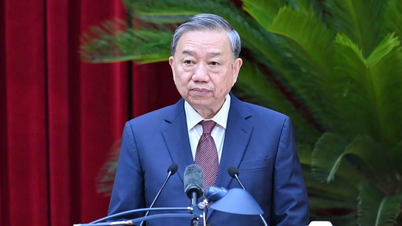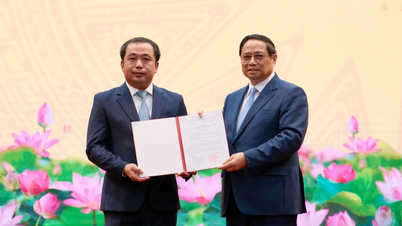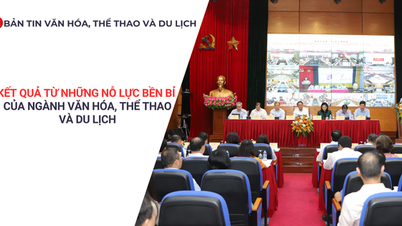Surplus of PhDs and lack of jobs in the academic field is a situation that some countries like Australia are facing, with some PhD graduates having to do manual labor to make a living.
In an article contributing to the draft of Australianeducation reform on The Conversation , the group of authors, Vietnamese PhD students including Cuong Hoang, a research specialist at Victoria University; Binh Ta, a lecturer at Monash University; Hang Khong, a teaching assistant at the Faculty of Education at Monash University; Trang Dang, a teaching assistant at the Faculty of Education at Monash University, compiled many figures showing that the total number of people in Australia with a PhD has increased from about 135,000 in 2016 to about 185,000 in 2021.
However, the number of academic positions has shrunk, with Australia seeing a significant drop in academic staff from 54,086 in 2016 to 46,971 in 2021 as universities cut costs during the Covid-19 pandemic.
One of the main reasons is that federal government funding is given to universities based on the number of PhD students completing their programs. For Indigenous Australian PhD students, PhD programs are completely free.
Therefore, universities put pressure on lecturers, forcing them to guide and supervise to ensure that doctoral students complete their dissertations. This is also one of the criteria for evaluating salary increases and promotions.

PhD programs are completely free for Indigenous PhD students in Australia.
Where do PhDs go?
There is no official data on how many PhDs continue to work in academia in Australia. About 25% of PhDs have some form of employment in academia, according to a small-scale survey in 2011.
The Conversation estimates that this ratio has not changed much since 2021. Australia has around 185,000 PhDs, which is four times the number of available academic jobs (46,971). As a result, many PhDs struggle to find work outside of academia.
In its 2022 survey, QILT, an education organization funded by the Australian Department of Education, found that 84.7% of postgraduate research graduates (including research masters and PhDs) were in full-time employment within six months of completing their studies, compared to 78.5% of undergraduate graduates. QILT is funded by the Australian Department of Education and provides funding to conduct the nationwide survey.
Where do you want to work, Dr.?
Not all PhD students want to pursue a career in academia. A 2019 national survey found that 51% of PhD graduates in Australia wanted to work in the public or business sector.
However, there are significant differences in employment expectations depending on the field of study. Specifically, two-thirds of PhD students in STEM (science, technology, engineering and mathematics) fields hope to work in a variety of fields outside of academia. Among them, banking, civil engineering, mining, energy and healthcare /pharmaceuticals are top priorities.
Meanwhile, two-thirds of PhD students in the social sciences (including history, politics, education, sociology, psychology, economics and anthropology) want to work in academia.
Why is it difficult for PhDs to find jobs outside of academia?
A group of Vietnamese PhD students conducted a survey and in-depth interviews with 23 PhDs who completed their programs from 5 universities in Australia 5 years ago and concluded 2 main problems: "PhDs find it difficult to find stable jobs in the academic field" and "PhDs are not ready for a working environment outside of the academic field".
Of the group surveyed, only one PhD worked at a university within five years of successfully defending his thesis. Meanwhile, 13 had fixed-term employment contracts and three received “postdoctoral” funding to continue their research. The rest worked in the private or government sector.
“PhD students need to completely get rid of the notion that having a PhD automatically guarantees a job,” one survey respondent told The Conversation . “The reality is that there are many PhDs out there who can’t find jobs or are doing what we would call manual labor to make ends meet.”
The second problem is that PhDs are not prepared for the job market outside of academia, such as work culture and employer expectations.
For example, employers require candidates to have the skills necessary for the job rather than degrees or articles, research published in specialized journals. Therefore, PhDs who want to "escape" the academic field must retrain themselves.
"Outside employers are hardly impressed with articles and research published in professional journals. They are only interested in my skills. So I took some short courses, upgraded myself and then applied for jobs," a PhD shared with The Conversation .
Another doctor said he had to hide his doctorate because he was afraid that employers would see him as “overqualified.” He added: “My university didn’t really do anything to help me find a job.”

Australia is facing a surplus of PhDs.
What is the solution to the surplus of PhDs?
Currently, there is no limit on the number of PhDs in Australia because the more PhD students a university has, the more federal government funding it receives.
To balance supply and demand, the research team It is proposed that the government should consider funding quotas for PhD students in each field. This would help select the most suitable PhD candidates according to the strict regulations in PhD research.
“We must consider whether accepting more and more people into intensive three-year programs to earn a doctorate is actually beneficial to graduate students or just helps universities receive more federal funding,” the study team said.
Source link


































































































Comment (0)